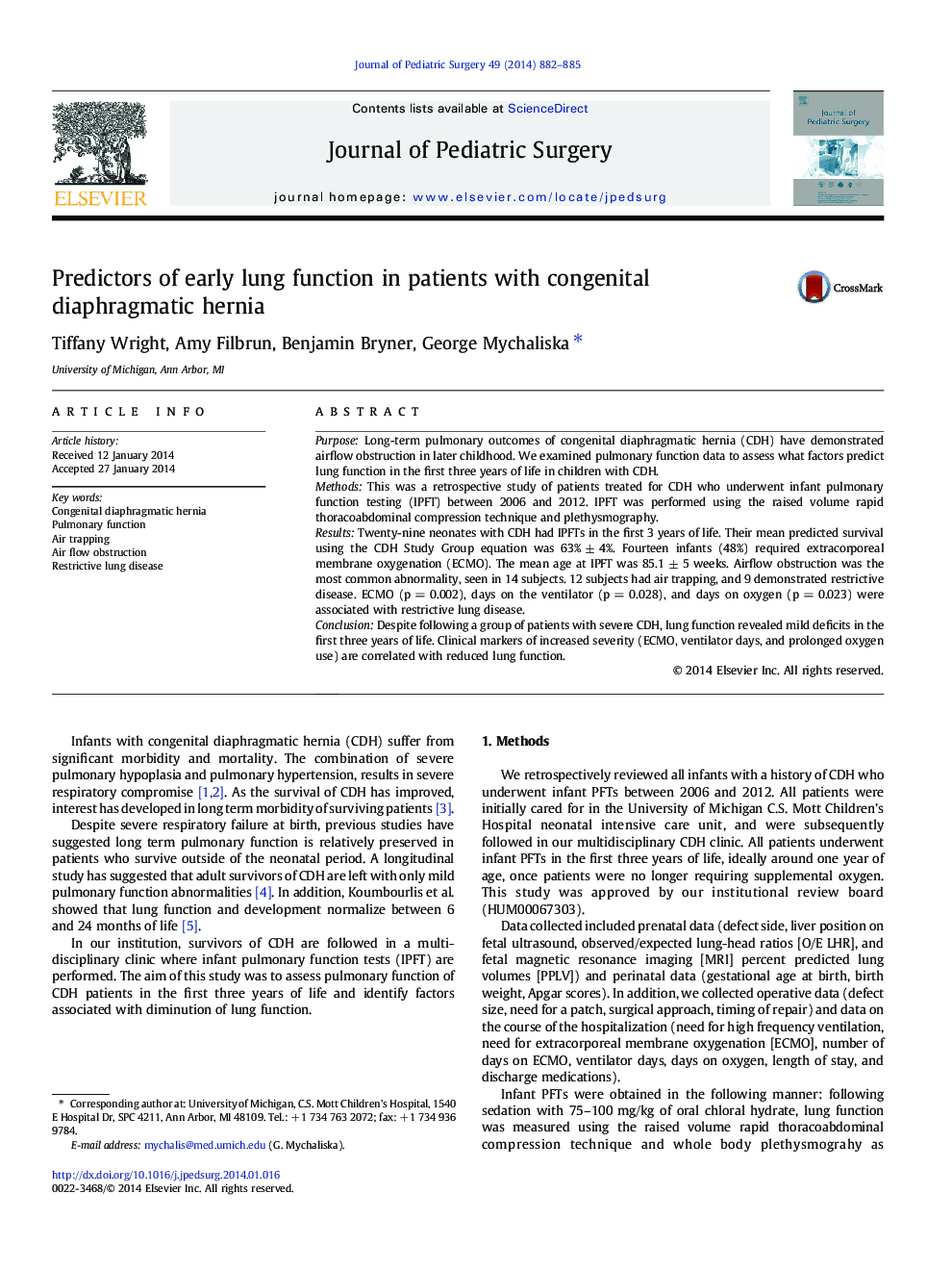| Article ID | Journal | Published Year | Pages | File Type |
|---|---|---|---|---|
| 6217335 | Journal of Pediatric Surgery | 2014 | 4 Pages |
PurposeLong-term pulmonary outcomes of congenital diaphragmatic hernia (CDH) have demonstrated airflow obstruction in later childhood. We examined pulmonary function data to assess what factors predict lung function in the first three years of life in children with CDH.MethodsThis was a retrospective study of patients treated for CDH who underwent infant pulmonary function testing (IPFT) between 2006 and 2012. IPFT was performed using the raised volume rapid thoracoabdominal compression technique and plethysmography.ResultsTwenty-nine neonates with CDH had IPFTs in the first 3 years of life. Their mean predicted survival using the CDH Study Group equation was 63% ± 4%. Fourteen infants (48%) required extracorporeal membrane oxygenation (ECMO). The mean age at IPFT was 85.1 ± 5 weeks. Airflow obstruction was the most common abnormality, seen in 14 subjects. 12 subjects had air trapping, and 9 demonstrated restrictive disease. ECMO (p = 0.002), days on the ventilator (p = 0.028), and days on oxygen (p = 0.023) were associated with restrictive lung disease.ConclusionDespite following a group of patients with severe CDH, lung function revealed mild deficits in the first three years of life. Clinical markers of increased severity (ECMO, ventilator days, and prolonged oxygen use) are correlated with reduced lung function.
